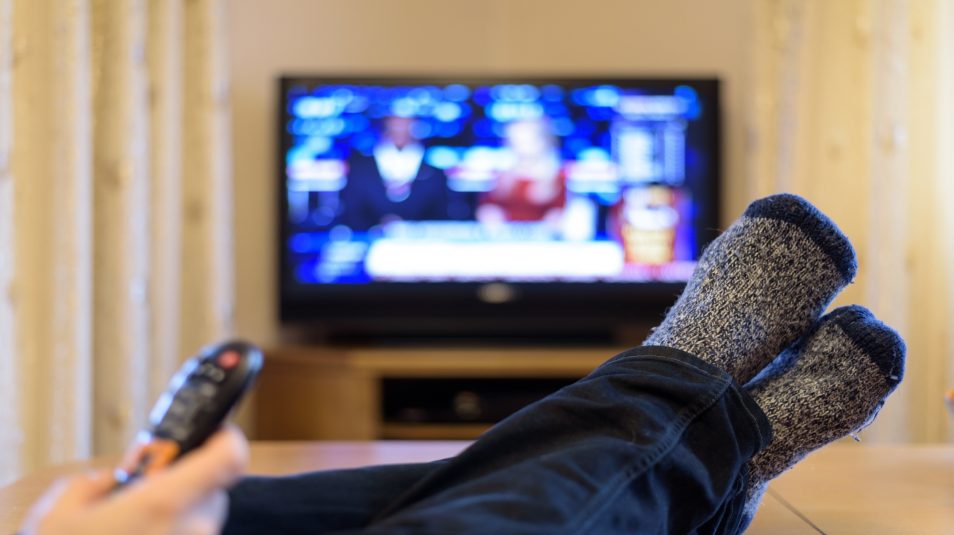The Deadly Threat of Misinformation About COVID-19 in Mainstream Media

Leadership
July 16, 2020
Gleb Tsipursky
CEO of Disaster Avoidance Experts
Topics
authority, behavior, Behaviors, biases, Information, media, newsThe mainstream media news sources that you consume can kill you - or save you. That’s the fundamental insight of a powerful new study about the impact of watching either Sean Hannity’s news show Hannity or Tucker Carlson’s Tucker Carlson Tonight: one saved lives, and the other resulted in more deaths, due to how each of these hosts covered COVID-19.
This research illustrates the danger of falling for health-related misinformation due to dangerous judgment errors known as cognitive biases. We need to be wary of these in order to survive and thrive during this pandemic, the topic of my new book, Resilience: Adapt and Plan for the New Abnormal of the COVID-19 Coronavirus Pandemic (Changemakers Books, 2020).
Sean Hannity vs. Tucker Carlson Coverage of COVID-19
Hannity and Tucker Carlson Tonight are the top two US cable news shows, both on Fox News. Hannity and Carlson share very similar ideological profiles, and have similar viewership demographics, older adults who lean conservative.
One notable difference, however, relates to how both approached coverage of COVID-19, especially in February and early March 2020. Researchers at the Becker Friedman Institute for Economics at University of Chicago decided to study the health consequences of this difference.
Carlson took the threat of COVID-19 seriously early onward, more so than most media figures - on the right or left. Already on January 28, way earlier than most mainstream media venues, Carlson spent a significant part of his show highlighting the serious dangers of a global pandemic and continued his warnings throughout February.
By contrast, Hannity was one of the more extreme Fox News hosts in downplaying COVID-19, frequently comparing it to the flu. He also politicized the virus, claiming that the Democrats were using it as a political weapon.
However, after President Donald Trump declared COVID-19 a national emergency in mid-March, Hannity - and other Fox News hosts - changed their tune to align more with Carlson’s, acknowledging the serious dangers of the virus.
Behavior and Health Consequences of Coverage Differences
The Becker Friedman Institute researchers investigated whether the difference in the two shows’ coverage impacted behaviors. They conducted a nationally representative survey and compared behavior changes to viewing patterns. The researchers found that “viewers of Hannity changed their behavior five days later than viewers of other shows (p < 0.001), while viewers of Tucker Carlson Tonight changed their behavior three days earlier than viewers of other shows (p < 0.01); the difference in coefficients is also highly statistically significant (p < 0.01).”
Did these behavior changes lead to health consequences? Indeed.
The paper compared the popularity of each show in specific counties to data on COVID-19 infections and deaths. Controlling for a wide variety of potential confounding variables, the study found that areas of the country where Hannity is more popular had more cases and deaths two weeks later, the time that it would take for the virus to start manifesting itself.
The authors concluded that “Our findings indicate that provision of misinformation in the early stages of a pandemic can have important consequences for health outcomes.”
Cognitive Biases and COVID-19 Misinformation
So, why did the viewers believe the false information when it clearly had deadly consequences?
Such outcomes stem from excessive trust that our minds tend to give those we see as having authority, such as media figures that we follow. This excessive trust - and consequent obedience - is called the “authority bias.”
A related mental pattern is called “emotional contagion,” where we are unwittingly infected with the emotions of those we see as leaders. Emotions can motivate action even in the absence of formal authority, and are particularly important for those with informal authority, including thought leaders like Carlson and Hannity.
Authority bias and emotional contagion facilitate the spread of misinformation and its deadly consequences, at least when we don’t take the steps necessary to figure out the facts. Such steps can range from following best fact-checking practices to getting your information from news sources that commit publicly to being held accountable for truthfulness. Remember, the more important and impactful such information may be for your life, the more important it is to take the time to evaluate it accurately to help you make the best decisions.





